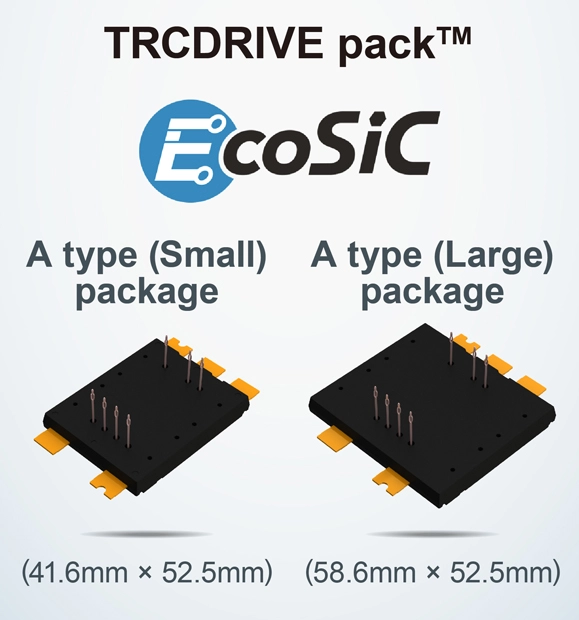7 Things We Know About Power Electronics After APEC 2025
By Nicolette Emmino
The Applied Power Electronics Conference (APEC) 2025 has come to a close, and if one thing is clear, it’s that power electronics is evolving at an astonishing rate. From cutting-edge semiconductor breakthroughs to an industry-wide push for greater energy efficiency, this year’s conference showcased innovations that are set to redefine the future. Here are the seven biggest takeaways from this year’s show:
1. Wide-Bandgap Semiconductors Are No Longer the Future—They’re the Present
For years, we’ve heard that silicon carbide (SiC) and gallium nitride (GaN) would revolutionize power electronics. In 2025, that revolution has arrived. At APEC, Vishay showcased its 1200V MaxSiC MOSFETs, targeting traction inverters and renewable energy storage, while Navitas unveiled its GaNFast ICs and Gen-3 Fast SiC MOSFETs, pushing efficiency in AI data centers and EV platforms.

These materials are officially mainstream, offering faster switching, reduced energy loss, and higher power density. The industry has spoken: silicon is on its way out, and WBG semiconductors are here to stay.
2. AI and Data Centers Are Hungry for More Power—And Smarter Solutions
The AI boom is fueling a power crisis in data centers. With every new AI server rack, power demands increase exponentially, making efficiency a top priority. At APEC, Texas Instruments introduced new power-management chips designed to maximize efficiency in high-performance computing environments. Meanwhile, Infineon showcased its OptiMOS Quad-phase Power Module, which is engineered to handle the surging demands of AI accelerators and GPUs. Navitas even revealed the world’s first 8.5 kW AI data center power supply, achieving an astounding 98% efficiency. AI is driving innovation in power electronics, forcing the industry to develop smarter, faster, and more energy-conscious solutions.
3. Sustainability Is Not a Buzzword—It’s a Business Imperative
For power electronics companies, sustainability isn’t just about being green—it’s about staying competitive. This year’s APEC showcased a push toward higher energy efficiency, lower carbon footprints, and materials that extend the lifespan of critical components. Amber Semiconductor introduced a 50VDC to 0.8VDC power delivery solution, reducing energy losses in AI GPUs and data centers. ROHM’s EcoGaN series promises higher efficiency for power supplies in communications infrastructure and energy storage systems.
The message was clear: sustainability and profitability go hand in hand in the new era of power electronics.
4. Modular and Scalable Power Systems Are Changing the Game
One of the most exciting themes at APEC 2025 was the increasing modularity of power solutions. Engineers are no longer confined to rigid power system designs—they can now build scalable, adaptable architectures. TDK introduced the FS1606 microPOL module, a compact DC-DC converter designed to support power-hungry AI accelerators. pSemi showcased the first 4-level buck converter, which enables high-efficiency charging in a remarkably low-profile design. The ability to mix and match power modules based on application needs is redefining how engineers approach system design.
5. EV Power Electronics Are Evolving to Enable Faster, More Efficient Charging
If one sector stood out at APEC 2025, it was electric vehicles. Automakers and suppliers are racing to improve charging speeds, power efficiency, and battery management. ROHM’s TRCDRIVE pack SiC molded power module improves traction inverter performance, while Vishay displayed 48V eFuses and high-power buck-boost converters to enhance EV power distribution.

Navitas showcased GaNSense motor drive ICs, which introduce bi-directional, lossless current sensing for more efficient EV motor control. The industry is moving beyond simply making EVs viable—it’s making them more powerful, faster-charging, and longer-lasting than ever before.
6. Cybersecurity in Power Electronics Is Becoming a Major Concern
Power electronics is becoming more connected, and that means one thing: cybersecurity is now a major issue. AI-driven power management, smart grids, and cloud-based industrial automation are opening new attack vectors. At APEC, ROHM emphasized secure scalable PMICs for automotive SoCs, featuring programmable voltage and current regulation loops that ensure reliable, tamper-proof power delivery. While cybersecurity wasn’t the dominant theme of APEC 2025, the industry is beginning to recognize its importance—expect this to be an even bigger topic in future years.
7. Innovations in AC-DC Conversion and Power Protection Are Setting New Standards
With all the focus on AI and EVs, it’s easy to forget that fundamental power conversion is also making leaps forward. Amber Semiconductor announced a next-generation AC-DC power conversion solution, which dramatically reduces size and improves efficiency. Taiwan Semiconductor introduced the SUPER CLAMP transient voltage suppressor diode, offering unparalleled surge protection for EVs and industrial systems. Tower Semiconductor showcased its next-gen BCD technology, improving power management in automotive, mobile, and AI applications. The underlying technology of power electronics is evolving just as fast as its high-profile applications.
Final Thoughts
APEC 2025 was a glimpse into the future of power electronics. Wide-bandgap semiconductors have fully arrived, AI is pushing power management to its limits, sustainability is a necessity, and EV technology is evolving rapidly. Modular and scalable architectures are reshaping design philosophies, cybersecurity is emerging as a key concern, and even the fundamentals of power conversion are being redefined. If this year’s APEC is any indication, the next decade in power electronics will be one of the most transformative we’ve ever seen.


